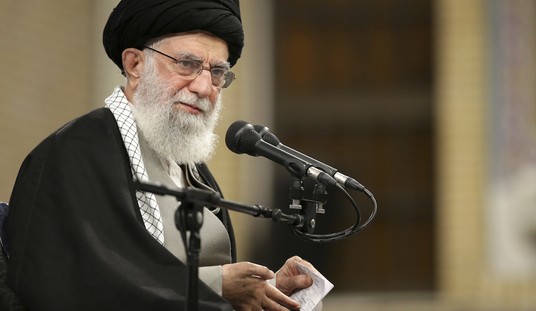Donald Trump’s Cabinet has only two openings left, one of which will signal just how aggressively the president-elect plans to act in fulfilling his campaign promises. Trump promised veterans an overhaul of the Veterans Administration health-care system based on a ten-point plan, the central core of which would allow veterans the portability to seek care from private-sector providers. Thus far Trump has not named his VA Secretary, but the New York Times reports that they’re looking at the options for what Democrats call “privatization” of the current single-payer system:
President-elect Donald J. Trump is considering a plan to allow military veterans to opt out of medical care at Veterans Affairs hospitals and instead see private doctors of their choosing, a senior transition official told reporters here on Wednesday.
Mr. Trump met with several executives of private hospital systems at his Mar-a-Lago estate on Wednesday. After the meeting, Mr. Trump called out to reporters, saying he wanted to describe his ideas for changes to the Department of Veterans Affairs, but then quickly directed one of his senior aides to describe the proposals under consideration.
The final point of Trump’s plan was the crucial one: “Ensure every veteran has the choice to seek care at the VA or at a private service provider of their own choice. Under a Trump Administration, no veteran will die waiting for service.” That promise would require a completely new structure at the VA, one built around premium supports rather than the vertical single-payer system that has been in place for decades — and has constantly failed veterans long before Eric Shinseki’s botched leadership. That doesn’t mean that the new administration needs to throw out the VA entirely, however:
The ideas described by the transition aide on Wednesday echoed vague promises Mr. Trump made on the campaign trail that veterans would get timely care from either a V.A. facility or a private doctor. The transition official said that Mr. Trump had discussed the possibility of a “public-private option” with the hospital executives.
“Some vets love the V.A.,” the official said, and “some vets want to go to the V.A.” The official added that “the idea is to come up with a solution that solves the problem.”
Some vets do love the VA, and not just because it’s handy to them. The VA has centers of excellence for care that it’s uniquely positioned to provide — tending to illness and injuries specific to military service. Rather than trying to be all things to all veterans, an intelligent reform of the VA would de-emphasize routine care that could be provided by any provider and focus their resources and efforts on what they do very well. That would allow veterans to choose the VA for routine care if they wish, but allow them to have that choice for themselves rather than ask some bureaucrat for permission to exercise it. Deconstructing the single-payer monopoly would allow veterans to seek the best care available when they need it, and not when it fits into the crowded schedule of the VA’s bureaucracy.
This trial balloon offers some hope that Trump plans to seriously follow through on his promise to veterans. Thus far, veterans organizations have pressured Trump to keep Barack Obama’s appointee Robert McDonald in the VA post. That’s all but inexplicable; McDonald has made few changes to the VA, which continues to produce nightmarish outcomes, and flat-out lied about firing people to hold them accountable for earlier abuses. He’s continued to lie about it, and Obama himself lied about it two months ago, too. McDonald represents the status quo that Trump pledged to terminate, and it should start with McDonald’s termination on January 20th.
Both of the other two candidates named in the media would be an improvement over the status quo. Former Senator Scott Brown would bring Trump some advantages in political connections and media savvy, but Pete Hegseth helped develop a bipartisan plan to deliver what Trump officials promise in this NYT coverage. If Trump wants dramatic change in a way that frees veterans from being subject to bureaucrats, then the founder of Concerned Veterans for America seems the natural choice to put it in place. As I wrote a month ago:
Hegseth fits that bill well. Although only 36 years old, Hegseth served as an infantry officer in Guantanamo Bay, and in Baghdad and Samarra on his next tour, receiving a Bronze Star among other commendations. When he returned, he founded Vets for Freedom to argue for a commitment to victory in Iraq, but eventually became CEO of Concerned Veterans for America, a group that focused on overhauling the Veterans Administration to provide choice for veterans in health care. Under his leadership, CV4A produced an extensive, detailed, and bipartisan proposal for exactly the kind of bold action that Trump promised during the campaign. Despite offering to work with the Obama administration on reform, that proposal and CV4A have been shut out in favor of Barack Obama’s ideas of incremental reform. And we have seen how well that’s worked out.
The CV4A approach might have a better chance of getting through the Senate under the direction of a well-versed and energetic young VA Secretary with depth on the issue of reform. Hegseth put it together with former Senate Majority Leader Bill Frist, and Democratic Congressman Jim Marshall, both of whom can assist in generating support across the aisle. It will need to get 60 votes because of the legislative filibuster, which Republicans should leave in place, so it will need some bipartisan support. It’s still going to be a political risk, but Trump has pledged to fight for just that in regard to veterans.
It looks like Trump’s leaning toward a dramatic overhaul, but his choice to lead that effort will tell us how committed he will be to see it through.








Join the conversation as a VIP Member